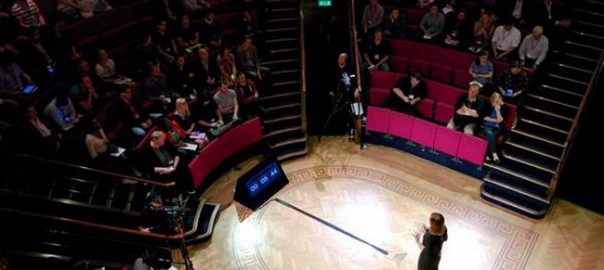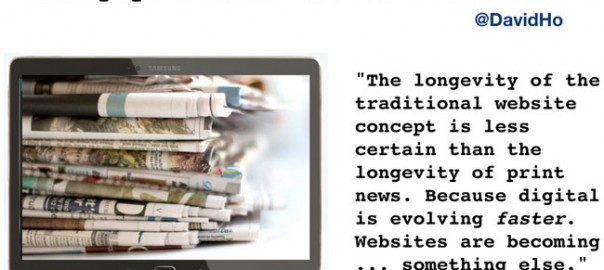Here’s a roundup of top pages I’ve been reading this week:
Teenagers and tweens watching TV half as much as adults, Ofcom finds
“Tweens and teens watch just half the amount of live TV as adults each day, and choose to “top-up” viewing by watching clips on services such as YouTube, Vimeo and Vine, according to new research by the UK media regulator.”
It’s not just about print vs. digital media — it’s about culture
Interesting table included here looking at the differences between legacy media and ‘digital-first’. Worth looking at…
This building is an organism for making newspapers
In the Agile world we often talk about how locating people in an office is just as important to product output as knowledge. With that in mind, take a look at this diagram from a 1920s newspaper company.
Digital Publishing: There’s No Place Like Home
Some choice quotes here:
“According to the analysis, a user who visits a news site directly spends, on average, 4 minutes and 36 seconds per visit, while a Facebook user spends just an average of 1 minute 41 seconds on your site. In addition, direct visitors view about five times as many pages per month as Facebook users, and visit the site three times as often.”
“Even though they’re a smaller percentage of overall traffic, app users listen to much more audio,” said Perry. “Mobile users might visit a couple of pages and stay on the site for five minutes, but our app audience seems more willing to listen to a stream for an hour.”
“Despite the reduction in traffic, newspaper homepages harken back to the historic place the front page of a newspaper had in the community. Forgive me for sidestepping into marketing speak, but editors should think of their news organization’s homepage as their ultimate brand statement.”
How are brands driving TV ad viewers online?
“It’s either a case of brands not understanding the importance of driving TV viewers online or they already assume it’s a pointless exercise because viewers disengage as soon as adverts appear.”
How Technology Is Changing Media
An in-depth look at how BuzzFeed is leading the industry’s trends in social, mobile, and video.

